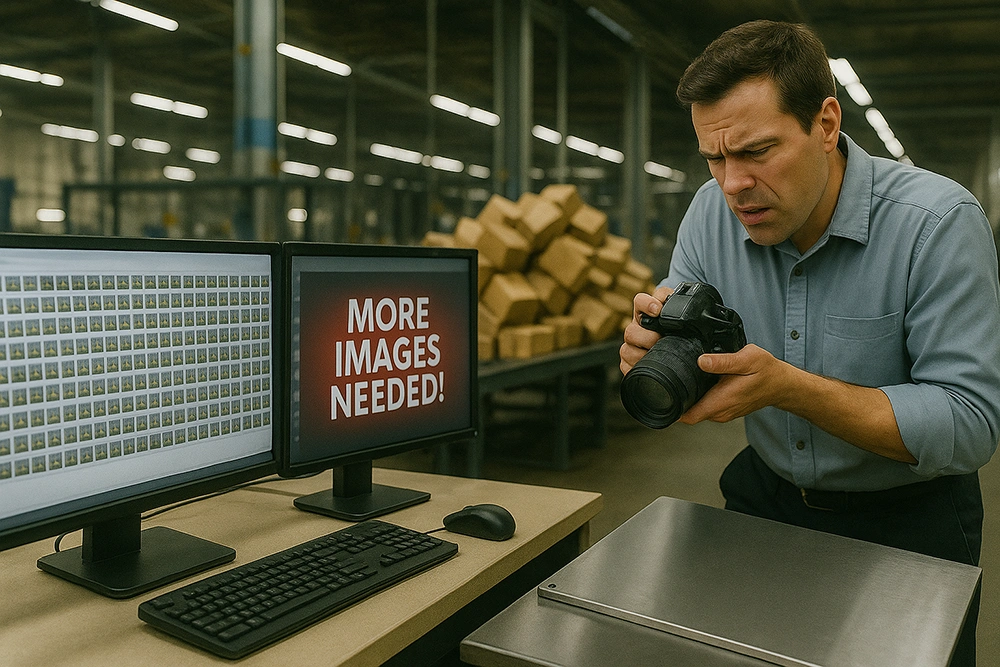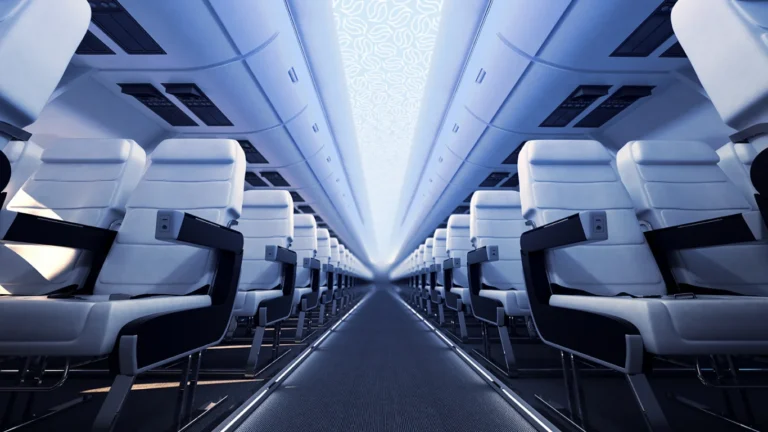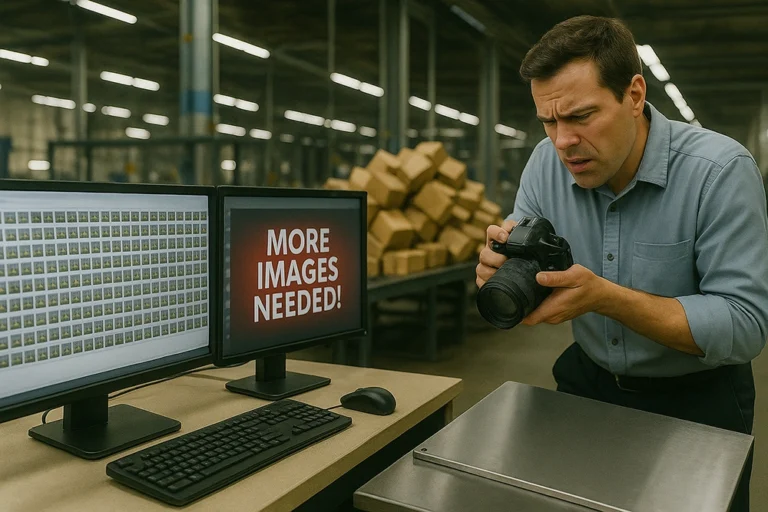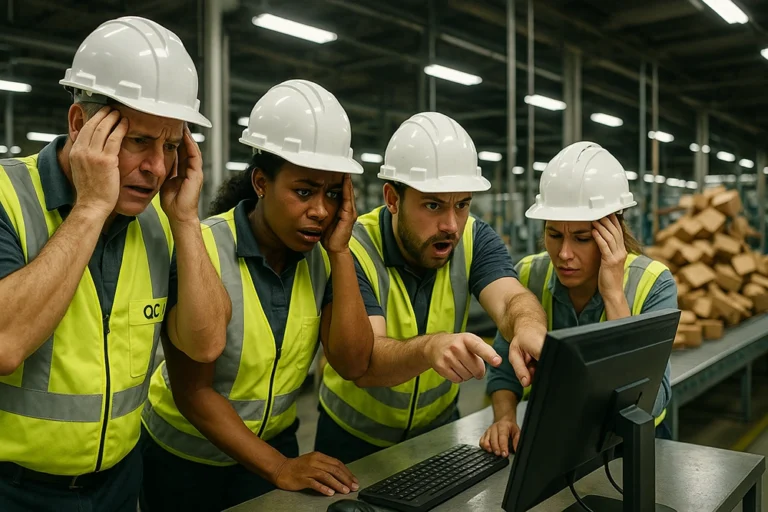Many manufacturers expect machine vision systems to be a turnkey solution: mount a camera, run some AI, and let it catch every defect on day one. In practice, things rarely go that smoothly. Quality control challenges often cause projects to drag out for months, drain engineering resources, and fail to scale across product lines.
In this post, we’ll break down the three biggest hurdles — time, data, and manpower — using real-world examples from different industries. If you’ve struggled to get automated quality inspection working on your line, you’re not alone.
1. Time: Why Quality Control Challenges Delay Vision Projects
It’s common to hear about 6–12 month lead times before a machine vision system reaches stable, reliable detection. That’s not because engineers are slow—it’s because each product, defect type, and changeover adds complexity.
Electronics example: In PCB manufacturing, introducing a new board design can mean starting from scratch: new lighting setup, new optical calibration, new code. As one engineer put it on Reddit, “Every new SKU feels like a new project.” These long cycles delay ROI and frustrate production teams trying to stay agile.
Without adaptable AI, the reality is that visual inspection systems aren’t inherently flexible. Changeovers require significant manual intervention. Something most vendors don’t advertise upfront.
2. Data: The Defect Coverage Gap
Even when you have a system installed, AI models can’t detect defects they’ve never seen. Building a comprehensive dataset is a major bottleneck.

Food & Beverage example: A bakery installing foreign-object detection needs thousands of images of plastic or metal contaminants in dough. But in real life, those defects occur rarely—making it nearly impossible to collect enough training data. The result? The system either misses real defects or over-flags good product, causing costly false rejects.
Reddit discussions reveal another challenge: many plants don’t maintain centralized defect documentation. Without clear definitions of what counts as a reject, training AI is guesswork, and inspection results vary between shifts.
Using synthetic data can help fill these gaps, but most integrators and manufacturers still rely on slow, manual data collection.
3. Manpower: The Ongoing Burden of Quality Control Challenges
Machine vision doesn’t run itself. Even after deployment, keeping inspection stable requires skilled people tuning lighting, updating models, and maintaining hardware.
Automotive example: A metal parts supplier shared that glare from different supplier batches frequently breaks their defect detection setup. Engineers spend hours adjusting optics and rewriting thresholds just to keep production moving. This isn’t rare — it’s a common theme in vision system lighting challenges.
Many Reddit users echoed frustration with vendor support: integrators often leave after installation, and plants are left scrambling to hire or train vision specialists. With experienced inspectors retiring, tribal knowledge about defect tolerances is disappearing, leaving AI systems poorly guided.
4. Adaptability: Struggling Across Lines and Products
Plants producing multiple SKUs face an uphill battle. Switching from one product to another often means retraining the vision system from scratch.
Pharmaceuticals example: A packaging line introducing a new blister format found that the trained model for the previous format couldn’t be reused. System integrators hard-coded many inspection rules, so any slight label or format change caused long downtime and expensive service calls.
Rigid systems kill flexibility. Instead of scaling vision across the plant, each new line feels like a fresh, costly integration.
Building Empathy Before Promising Solutions
Time, data, and manpower challenges aren’t signs that manufacturers are doing something wrong—they’re symptoms of how hard vision inspection really is. Plants worldwide, from electronics to food to automotive, face the same hurdles.
Zetamotion understands these struggles because we’ve seen them firsthand. Our work focuses on making machine vision more adaptive, reducing the time, data, and manpower required to get results. But before jumping to solutions, it’s important to recognize these barriers for what they are: real, persistent challenges that the industry has yet to fully solve.
If you’re evaluating vision systems and want to know whether automation is realistic for your line, start with a feasibility check.




